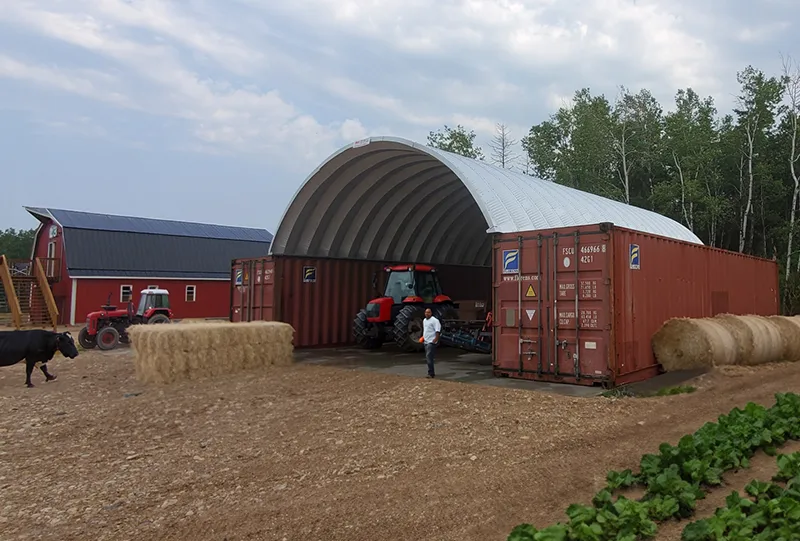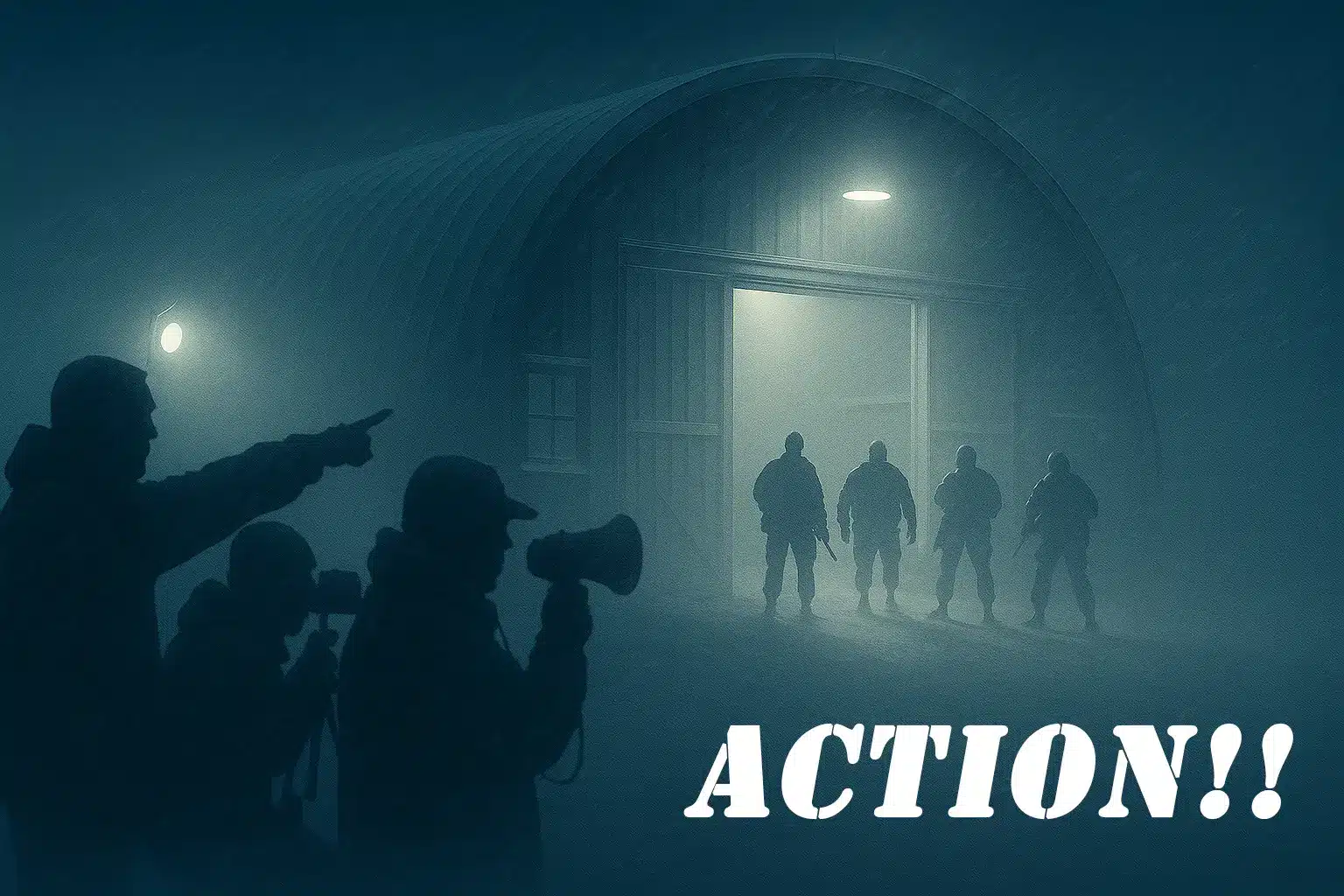Best Shipping Container Covers for 2025

When Future Buildings first invented the Shipping Container Cover back in 2003, we were trying to fill a void many of our mining and oil and gas customers had in the USA and Canada. How can we create a roofing system shelter over Sea Cans, that could be shipped inside the containers, assembled, taken down, moved and then re-assembled quickly and efficiently in a different location? Our engineers hit the drawing board and a few months later the first shipping container cover was created. Container Covers, also known as Container Shelters, Connex Covers, Seacan shelters, etc, have become an increasingly popular choice for both residential commercial and industrial businesses. Whether you’re looking to create additional storage space, a workshop, or a weather-resistant shelter, the right container roofing system can make all the difference. Future Buildings manufactures two high-quality options of these DIY Steel Building Kits: Arch style (Quonset hut) covers and cold-formed covers. In this article, we’ll explore the best shipping container covers for 2025 and help you decide which option is right for you.
Why Choose Shipping Container Covers?
Shipping container covers are an excellent way to fully utilize the strength and stability of standard shipping containers. By adding a steel roofing system, you can create a protected space between or alongside containers, providing a sheltered area for storage, work, equipment or even living quarters. These shelters are designed to withstand harsh weather conditions including heavy snow, wind and seismic loads, making them the perfect choice for any climate or location.

Arch style Shipping Container Covers on a farm
Arch Style (Quonset Hut) Shipping Container Covers
Arch style covers, commonly referred to as Quonset huts, were the first type of shipping container shelters we created. This roofing system took the original Q Hut design created for the United States Military (a semi-circular prefabricated steel arch system) and incorporated mounting solutions that could be either welded or bolted on Sea Cans. These covers are constructed from galvanized steel, known for its strength and resistance to rust, corrosion, and extreme weather. One of the big advantages of Arch style covers is that they’re incredibly strong. The curved design evenly distributes weight and can easily withstand heavy snow loads seen in many areas of the USA and Canada. They can also take on strong winds that we see in many States and Provinces that are prone to hurricanes, tornados and tropical storms. Additionally, Quonset huts are DIY (Do It Yourself) Friendly and very easy to assemble, often requiring minimal tools, expertise and manpower. They can be quickly attached to standard shipping containers, providing an immediate solution for those in need of a strong shelter system. Arch style covers are also highly customizable to include features such as doors, windows, and insulation. This makes them a great choice for a wide range of applications, from simple storage to more complex uses like workshops. Their modular design allows for easy expansion, making it possible to add more containers or extend the roofing system.Check out this video of one of our customers installing a container cover on their farm:

The M Model Container Cover Roofing System
Cold-Formed Shipping Container Covers
Cold-formed covers are another excellent option offered by Future Buildings. These modern covers are made from cold-formed steel, a process that involves shaping the steel at room temperature, resulting in a product that is both lightweight and incredibly strong. Cold-formed covers feature a straight-wall design, providing a more traditional look compared to the rounded Arch style. The big advantage of cold-formed covers lies in their structural flexibility. The straight-wall design allows for maximum use of interior space, making them perfect for applications where every square foot counts. Whether you’re looking to store vehicles, equipment, create a spacious workshop, or even start a small business, cold-formed covers provide the most versatility while also providing unmatched structural strength. Cold-formed covers are also known for their ease of installation. Like the Arch style, these covers can be quickly attached to shipping containers, providing a seamless and sturdy roofing system. The C-Channel frame can be assembled with basic tools and equipment, with minimal labour. The steel we use in these covers is resistant to corrosion ensuring that your investment lasts for years to come.
Which Shipping Container Cover is Right for You?
Choosing between Arch style (Quonset hut) and cold-formed seacan covers ultimately depends on your specific needs, location and preferences. If you require a cover that offers maximum durability and can withstand extreme weather conditions, the Arch style is likely the best choice. Its curved design and galvanized steel construction provide unmatched strength and longevity.
On the other hand, if you need a cover that maximizes interior space and offers a more modern aesthetic, the cold-formed option is the way to go. Its straight-wall design and lightweight construction make it a versatile and practical choice for so many end uses.
Conclusion
When it comes to selecting the best shipping container covers for 2025, Future Buildings offers two industry leading options: Arch style (Quonset hut) and cold-formed covers. Each has its unique strengths, ensuring that you’ll find a solution that meets your needs, whether you’re looking for a durable storage shelter or a versatile workspace. Explore these options today and discover how they can enhance your container roofing system for years to come. Click Here for more information about Future Buildings Container Covers, click here for our current Sea Can shelters on sale, or feel free to take a look at our sister company Toro Steel Buildings for additional options.
Related posts
4 Comments
Leave A Comment








I am looking for a Cold Formed Shipping Container Roof Framing Kit. I have two 40 Foot shipping containers with a 38 foot span between them. I want just the framing members for the roof structure. (Posts, Beams, Purlins and Girders and bolts, etc.) I have a source for the metal roofing panels. I have a Reach Lift to unload the shipment.
Do you offer any financing?
Need quote for 60 ft span storage roof to be attached to two (2) 40′ shipping containers. Do you have any sample construction near the Katy area that we could look at?
hey guys looking for a price for truss style quon sahut?? to bridge across to 20′ containers??thx im in vancouver bc